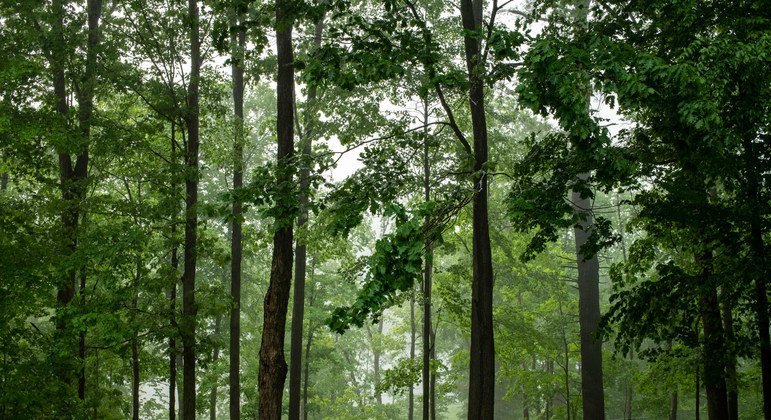1. Forests are essential to life on Earth
Forests cover 31 per cent of the Earth’s land area, contain over 80 per cent of the world’s terrestrial biodiversity, and store more carbon than the entire atmosphere.
“Forests are one of Earth’s most valuable ecosystems,” said Li Junhua, Under-Secretary-General for UN Economic and Social Affairs, at the opening session of the Forum. “They also form a vital social and safety net from some communities that rely on forests for food and income.”
Two young schoolgirls walk through a forest in Indonesia.
2. They support our well-being and livelihood
More than 1.6 billion people depend on forests for subsistence, livelihood, employment, and income. Some two billion people, roughly one third of the world’s population – and two thirds of households in Africa – still depend on wood fuel for cooking and heating.
Woodlands play a critical role in tackling poverty, providing decent work, and promoting gender equality, all essential for advancing the Sustainable Development Goals (SDGs), Lachezara Stoeva, President of the UN Economic and Social Council (ECOSOC), told the Forum

A plant in the Amazon rainforest.
3. Healthy forests support healthy people
Forests and trees provide clean air and water and sustain us regardless of where we live. Zoonotic diseases account for 75 per cent of all emerging infectious diseases, and they usually occur when natural landscapes, such as forests are cleared. Restoring forests and planting trees are an essential part of an integrated “one health” approach for people, species, and the planet.
“Forests offer solutions,” Forum Chair Zéphyrin Maniratanga said, encouraging greater engagement of forest communities in all related processes in climate action in fighting against desertification, land degradation, and climate change.

One of the main causes of deforestation in Bolivia is the expansion of mechanized agriculture.
4. Forests continue to be at risk
Every year, we continue to lose 10 million hectares of forests, an area roughly the size of the Republic of Korea. The world’s forests are at risk from illegal or unsustainable logging, forest fires, pollution, disease, pests, fragmentation, and the impacts of climate change, including severe storms and other weather events.

In the reforestation site of Merea, Chad, children are planting acacia seedlings for the future. In the past 50 years, Lake Chad Basin shrank from 25,000 square kilometres to 2,000 square kilometres.
5. Restoring forests holds the key to a sustainable future
It is estimated that two billion hectares of degraded land worldwide could potentially be restored. Revitalizing degraded forest is critical for meeting the UN target of increasing global forest area by 3 per cent, in time for the 2030 deadline. Doing so would also help countries create new jobs, prevent soil erosion, protect watersheds, mitigate climate change, and safeguard biodiversity. Given the contributions of sustainably managed forests to the achievement of the Sustainable Development Goals (SDGs), the Global Forest Goals of the UN Strategic Plan for Forests (UNSPF), were conceived based on their linkages with the 2030 Agenda for Sustainable Development.
Learn more about how the UN is working to protect forests here.



